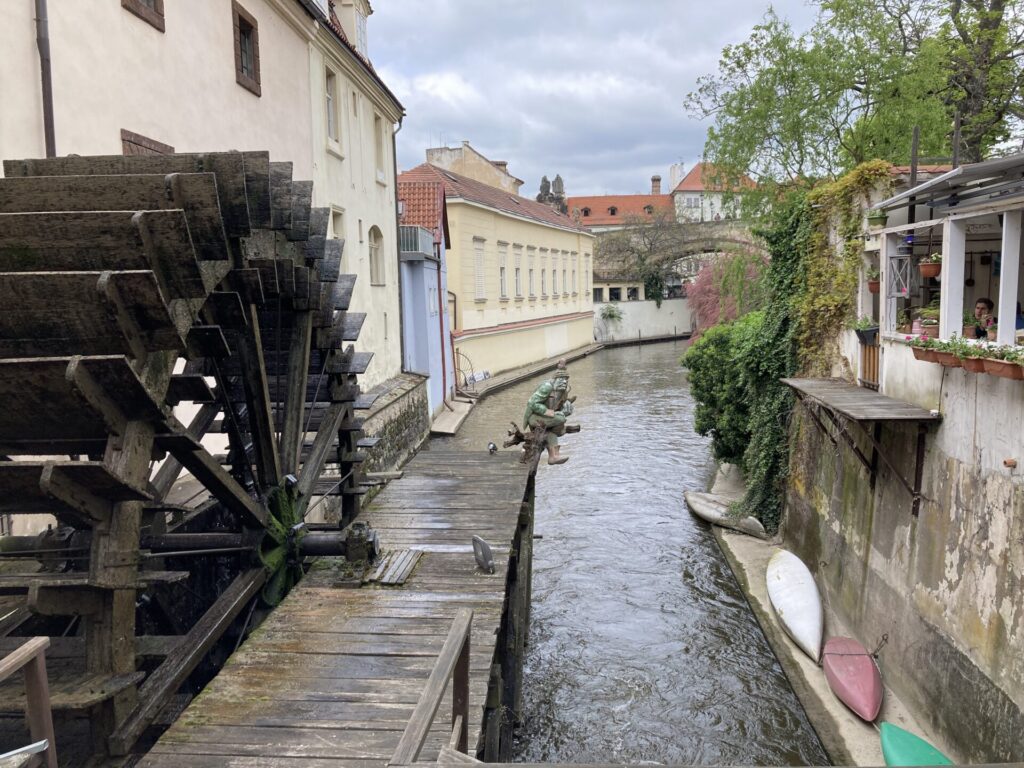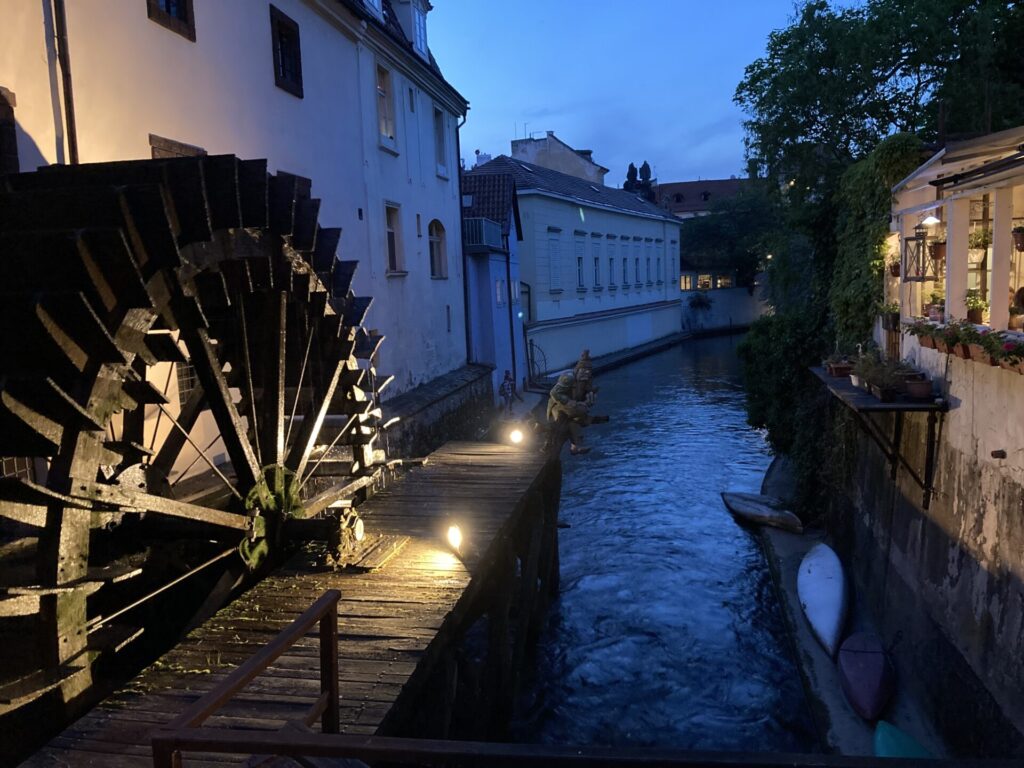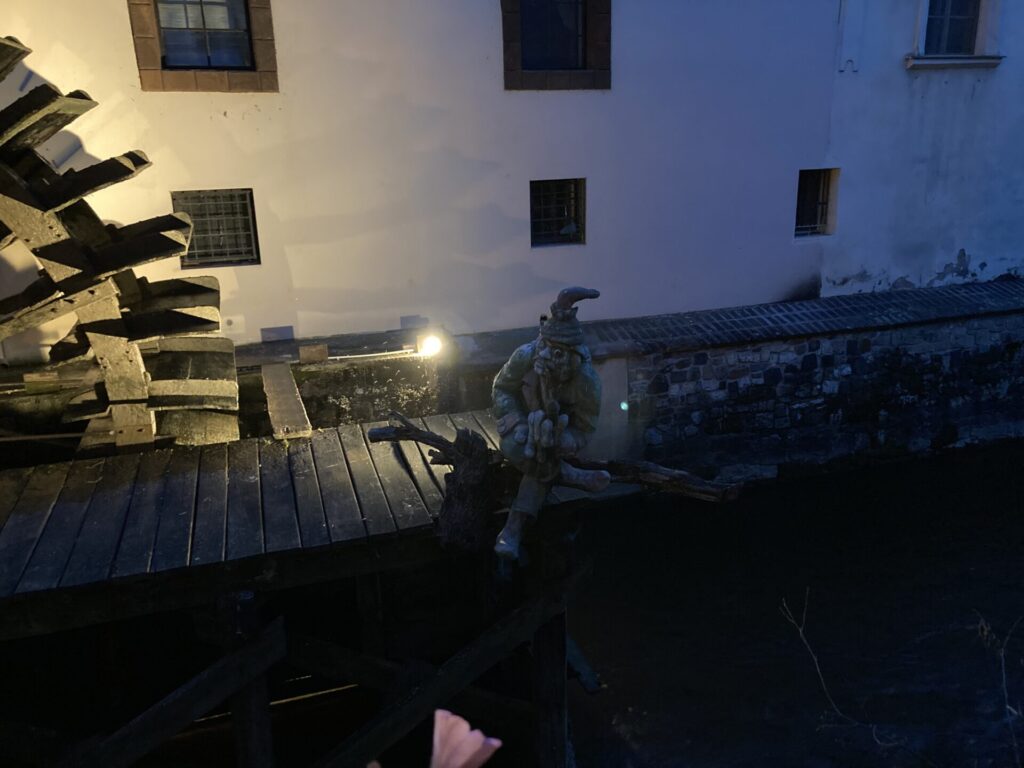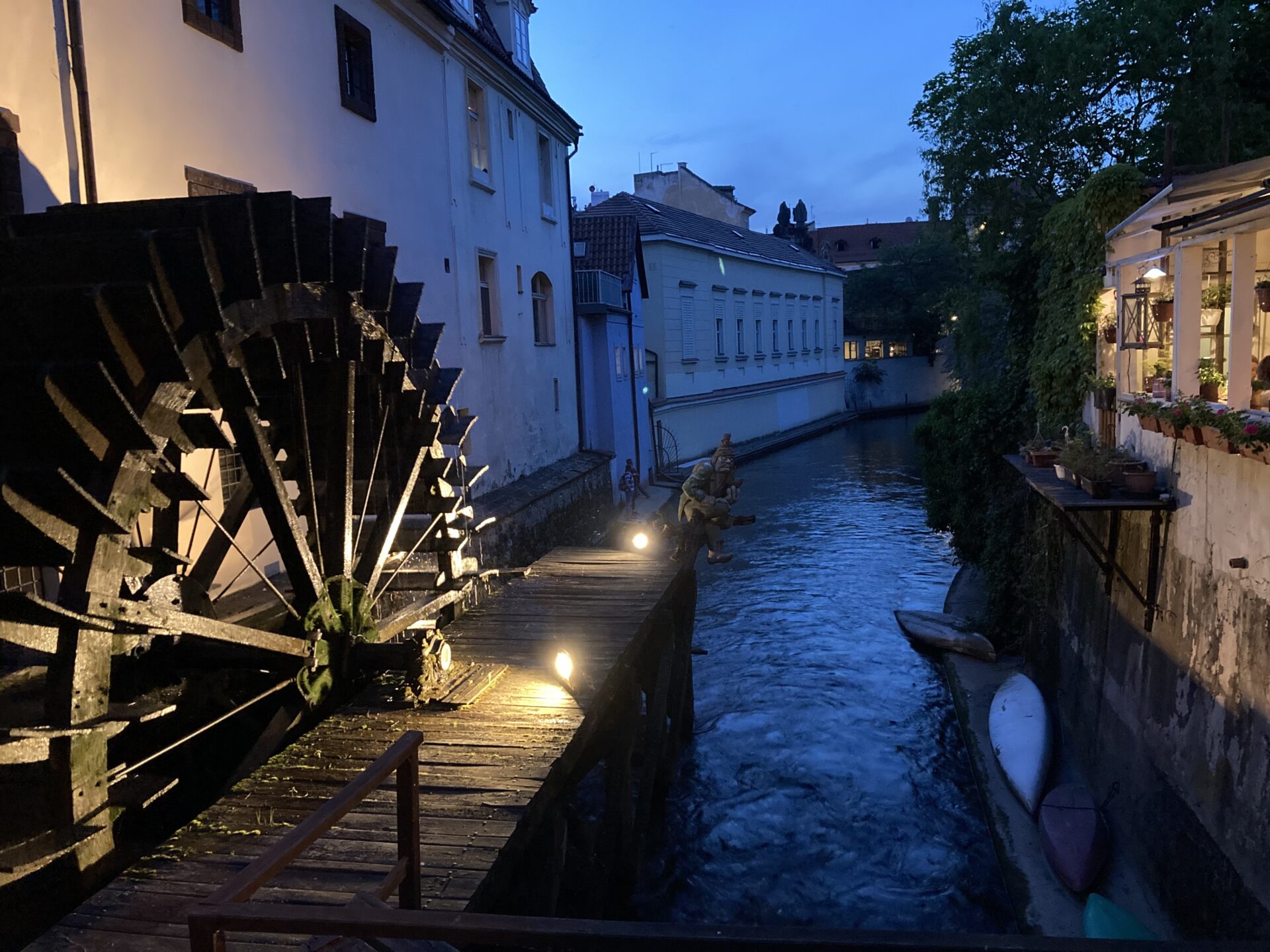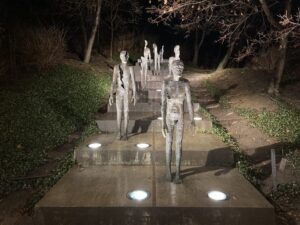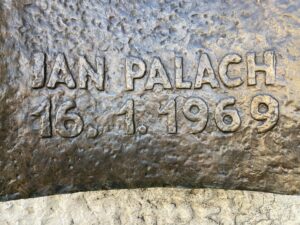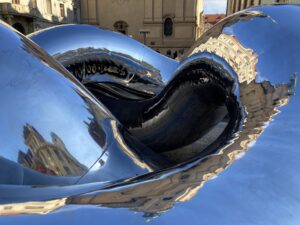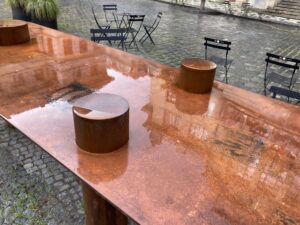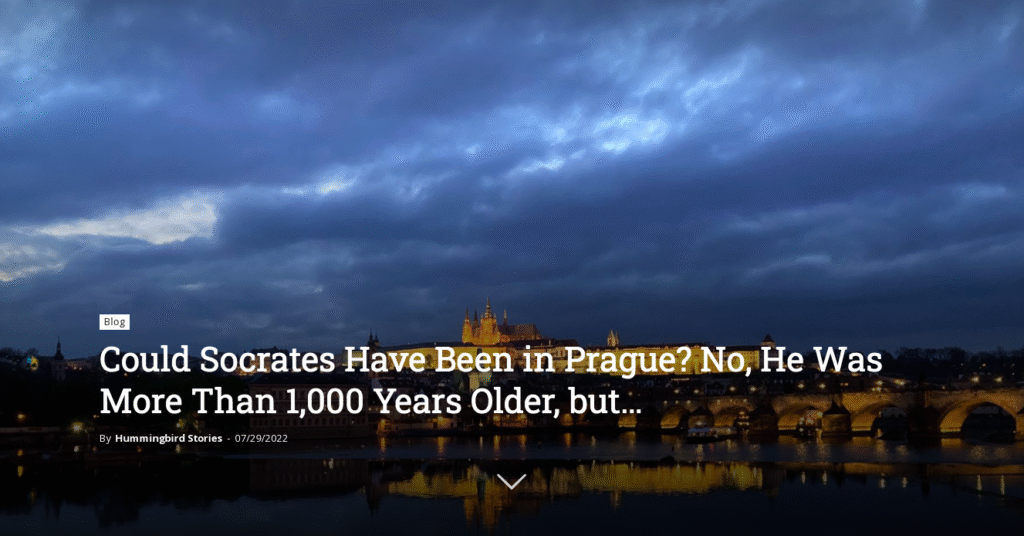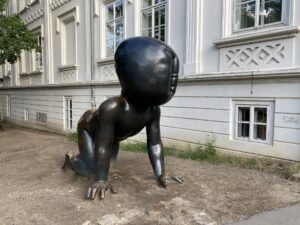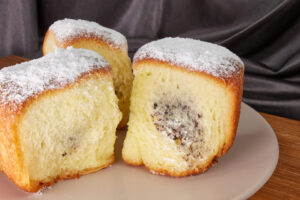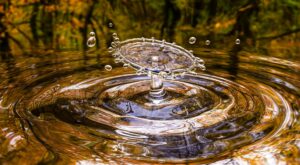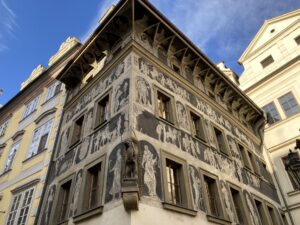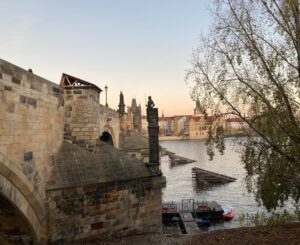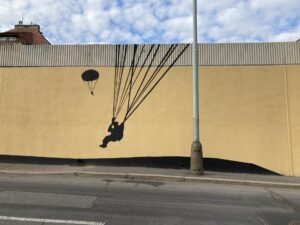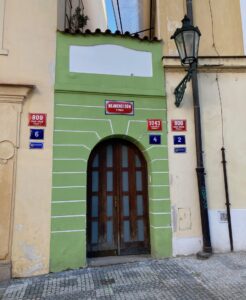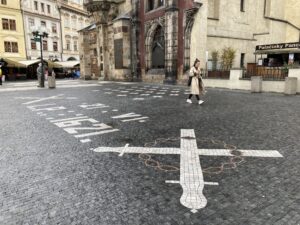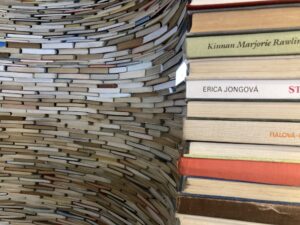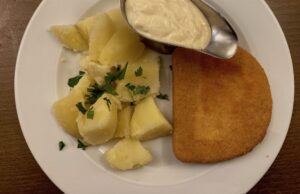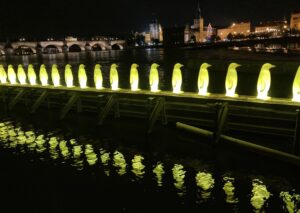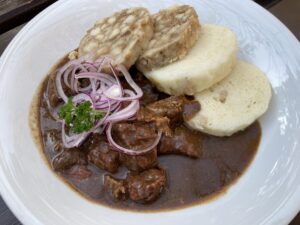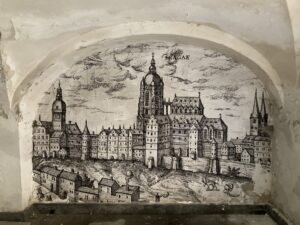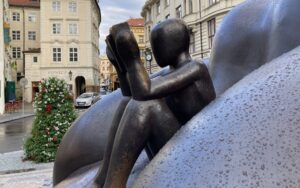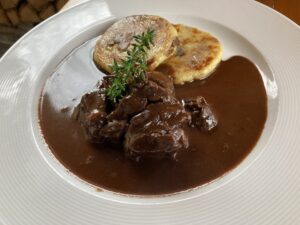It’s just a hard-to-believe story – the Czech sculptor Josef Nálepa was the first sculptor in the world whom Salvador Dali sat for and allowed to make a bust of him. And the circumstances under which it happened are no less attractive.
Josef Nálepa (1936-2012) was not only a renowned sculptor-portraitist who created busts of many famous personalities, but he was also an excellent water skier – an eight-time Czechoslovak champion and also a coach for the national team. In the early 1970s, Czech representatives went to races on the Costa Brava. Even Salvador Dali came to watch the race.
Josef Nálepa noted about that first meeting: “I was returning from the slalom, without suspecting that Salvador Dali had come to see those “who walk on water.” So I rode on the water to the shore, and was, as they say, shot. So I was already moving without a tow rope, just at my speed. And at that shore, I was still going so fast that I had to break – the way you do, you turn and splash a big wave. And Salvador Dali was standing there; that’s how we met.”
Dali expressed interest in painting this water skier. Josef Nálepa remembers: “I told a friend from the Catalan water-ski federation to suggest to him, just as a joke, that I would allow him to paint me when Dali would let me sculpt him… and he agreed.”
The next day there was a big storm, and it was impossible to paint, so they both agreed that perhaps next time…
Three years later, water skiers went to the Costa Brava again. Josef Nálepa sent Dali a basket of crayfish to remind him and rang Dali’s doorbell the next day. And Salvador Dali remembered him. He invited him in even though he already had a house full of guests because his wife Gala was celebrating her 80th birthday. The Czech sculptor was in the company of guests such as the Beatles and Sean Connery. (Unfortunately, he has no tangible memory of it, as photography was prohibited at the party.)
The next day, the two men met again to have Josef Nálepa create a bust of Dali. Unfortunately, he was only given an hour and a half, a very short time. (It is also interesting that the sculptor was kneeling all this time so that his eyes were at the same level as the seated Dali.)
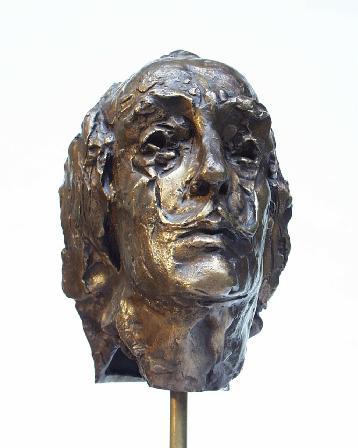
Years later, he recalled: “I was cheeky. I knew I had a short time to do it, that I couldn’t manage it in time. Painting him would be easy, but a three-dimensional portrait is 360 portraits seen in a circle and has to work together. Twenty seconds before the end, I didn’t have the expression of a statue, but then suddenly Salvador looked out at me from the clay, and I just said: “We’re finished, maestro.”
Salvador Dali was used to posing for photographers, but sitting for an hour and a half seemed long, so he was tired. Josef Nálepa’s recalled again: “He reacted very beautifully; even to this day it makes me tremble. Because he kissed my hands dirty from the clay and said: “Ç ‘est moi, maestro!” (That’s me, maestro!). And that’s what he called me, a thirty-five-year-old boy. And then he gave me his favorite walking stick and said: “Take it; you’ll need it someday.”
After returning to Prague, Josef Nálepa cast the bust in bronze and sent it to Salvador Dali. The statue was then exhibited in the museum in Figueres, Catalonia, Salvador Dali’s hometown.
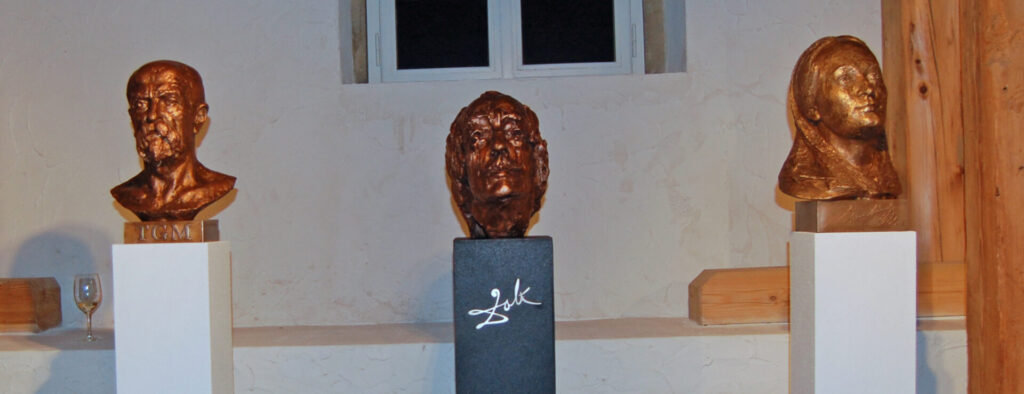
If you would like to see a lovely statue by Josef Nálepa, you will find it in Kampa. It’s the statue of the water sprite Kabourek, who has been sitting by the mill wheel of the Velkopřevorský Mill (the Grand Priory Mill) since the autumn of 2010.
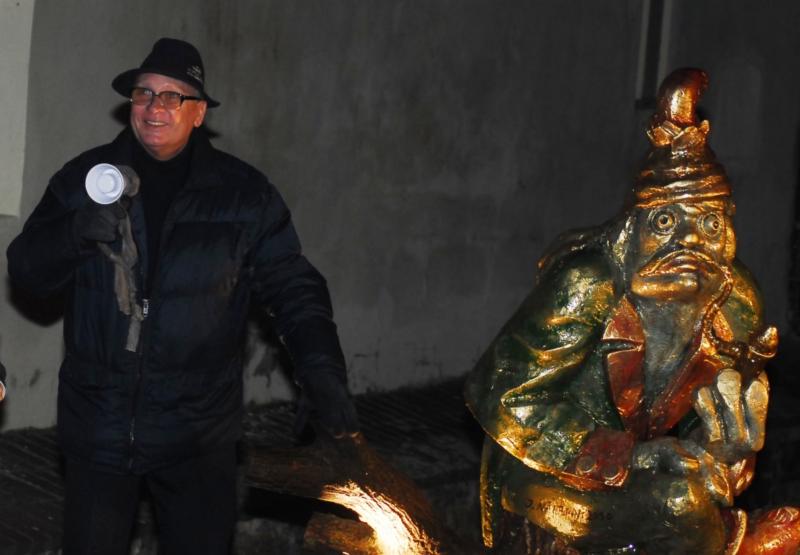
When Josef Nálepa thought how Kabourek should look, he finally realized the best known water sprites to Czechs are those drawn by Josef Lada. Therefore, you’ll notice Kabourek is also “Lada-esque”.
Kabourek is a kind water sprite. As its author said: “He is kind, even if he looks gloomy. He is only evil to evil people.”
Josef Nálepa was a patriot of Kampa. That’s probably why his Kabourek is so nice to the locals. It doesn’t pull them under the river’s surface but helps them. He likes a cold beer and goes out with the old settlers from Kampa. He chats with them and then pays the innkeeper with fish. Afterwards, he goes home again to Čertovka – Kabourek has a flame on top of his hat, which he uses to light himself underwater. And when he’s in a good mood, he starts the Grand Priory Mill water wheel, the clatter of which reverberates throughout Kampa.
